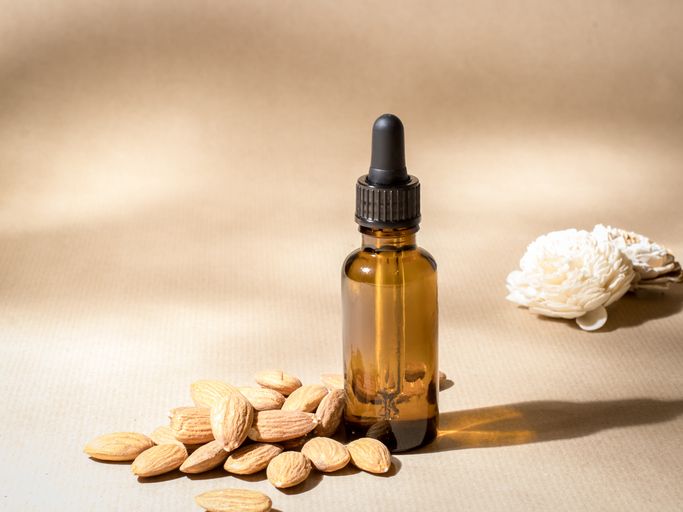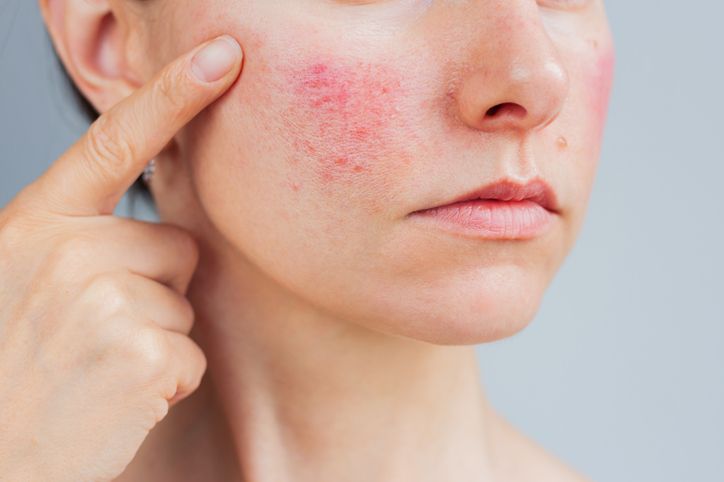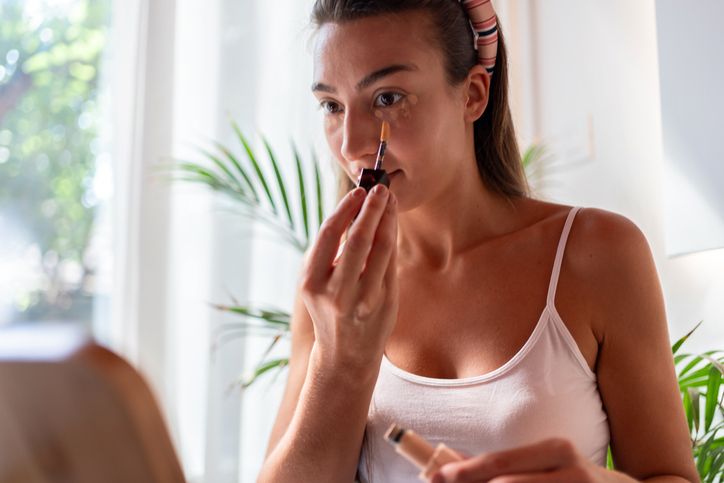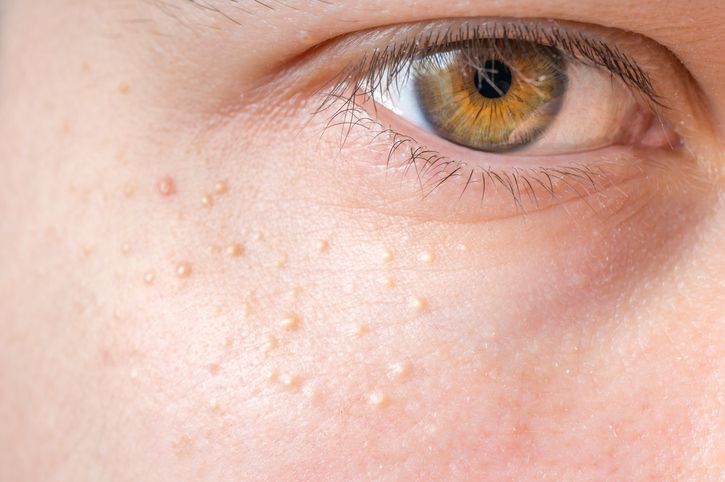- Home
- Trend
- Weight Loss Strategies
- Acne Tips
- Hair Health Information
- Blemish Removal Tips
- Acne Scar Removal Tips
- Muscle Building Techniques
- Intimate Care Tips
- Postpartum Intimate Care
- Eye Bags Wiki
- Tips for Face Slimming
- Secret of Permanent Hair Removal
- Breast Enlargement Tips
- Cure to Snoring
- Marionette Lines
- Skin-Tightening Secrets
Two people agree to grow their hair long together—but a year later, one has hair down to her waist, while the other’s hair only reaches past her shoulders. Sound familiar? Ever wondered why some people’s hair grows faster than others’? Turns out, the speed of hair growth varies from person to person due to a mix of genetic and environmental factors. Once you understand what influences hair growth, you’ll be able to better manage and support your hair's growth rate. This is a must-read for anyone growing out their hair for styling purposes—and guys who love long-haired girlfriends, you’ll want to keep reading too!
How Fast Does Hair Grow?

Compared to leg hair, armpit hair, facial hair, or nose hair, scalp hair grows the fastest. On average, hair grows about 0.27 to 0.4 mm per day—that's around 1 cm per month or 12 cm per year, and in some cases, up to 20 cm a year. Hair at the crown tends to grow faster than hair at the hairline. However, hair doesn’t grow endlessly. It follows a natural cycle and will eventually fall out. Hair growth rates vary from person to person and are influenced by both genetic and lifestyle factors.
Genetic Factors That Affect Hair Growth

Age
Hair grows the fastest between the ages of 15 and 30 due to hormonal activity during puberty. After this period, hair growth tends to slow down. Why? The body’s metabolism decreases, and hair follicle cells gradually die off, reducing hair regeneration.
Gender
Women's hair often appears to grow faster because their growth phase lasts longer—about 4 to 6 years compared to 2 to 5 years for men. Estrogen helps extend the hair growth phase and delays shedding. As women age, especially after menopause, estrogen levels drop and the difference in growth speed between genders becomes less noticeable.
Season
Hair grows faster in the summer, likely due to warmer temperatures and the body’s increased hydration needs. Plus, summer is peak season for fresh fruits and veggies, meaning more vitamins and water intake. The longer daylight and higher humidity also support hair health. Hair tends to grow faster during the day than at night.
Hair Type
People with naturally curly or coily hair may feel like their hair grows more slowly. That’s often because curls grow in a spiral shape, so growth isn’t as visually noticeable. Curly hair can also appear more voluminous, making it look like the length hasn’t changed much. Straightening curly hair can help make growth more obvious.
Ethnicity
Studies show that Asians tend to have the fastest hair growth due to longer growth phases. On the other hand, people of African descent may have slower hair growth, possibly due to environmental and dietary factors. This is largely genetic and nothing to stress over—you can still improve growth through proper care.
免費體驗
F8 Hair Regrowth Treatment
1 Minute Self-Registration
Date should not be before minimal date
The Hair Growth Cycle
Hair growth happens in four phases:
Anagen (Growth Phase)
Lasts 2–7 years. Like a sprouting plant, hair starts at the follicle where the papilla signals the matrix cells to divide. These cells pile up and push the hair shaft upward through the skin. Blood vessels deliver nutrients and oxygen, helping the hair grow longer and stronger.
Catagen (Transition Phase)
Lasts about 2–3 weeks. Cell division slows and hair growth stops. The hair may seem longer, but that’s because it’s detaching from the follicle and moving outward, creating an illusion of extra length.
Telogen (Resting Phase)
Lasts 2–3 months. Hair completely stops growing and detaches from the follicle. It’s easy to pull out with minimal force.
Exogen (Shedding Phase)
Shedding happens in a flash, but the hair has already gone through all prior stages. We shed about 50–150 hairs a day. Once a strand falls out, the cycle restarts—until the follicle eventually ages and stops producing hair.
Lifestyle Factors That Affect Hair Growth
1. Improper Hair Care
Frequent coloring, perming, hot water washing, or using harsh shampoos can damage the follicle. Tight hairstyles and rough towel drying also cause breakage. Hair may fall out prematurely during the growth phase, making it seem like it's not growing.
2. Scalp Health
A healthy scalp has more capillaries to supply nutrients and oxygen to the hair matrix cells, promoting faster and stronger growth. If your scalp is inflamed or damaged, growth slows down.
3. Diet
Junk food, high sugar, oily or salty foods can dehydrate and weaken hair. Nutrient-rich foods are essential. If your diet is lacking, supplements may help support growth.
4. Hormonal Imbalance
Estrogen supports hair growth and extends the growth phase. But poor sleep, high stress, lack of exercise, and an unhealthy diet can throw hormones off balance—slowing growth.
5 Ways to Boost Hair Growth
1. Improve Scalp Circulation
Massage the scalp with your fingers or a wooden brush for 3–5 minutes daily. A light touch is key. You can also massage your neck and shoulders to relieve tension. Better circulation delivers more nutrients to the follicles. Aim to massage once before bed, or twice daily if time allows. Exercise also helps boost circulation.
2. Eat a Balanced Diet
Hair is mostly keratin, a type of protein. Foods rich in protein, iron, zinc, and vitamin D can help support growth. Try fish, chicken, eggs, legumes, milk, black sesame, spinach, bok choy, cod liver oil, and mushrooms. If you’re concerned about calories, hair supplements may be a good alternative.
3. Use the Right Hair Products
Choose shampoos, conditioners, and masks suited to your hair type. While the effects of hair tonics vary, some include plant-based ingredients to nourish the scalp and prevent breakage. Repairing products also help prevent split ends and breakage, supporting length retention.
4. Develop Good Hair Habits
Limit shampooing to once or twice a day, and use gentle, diluted shampoo. Massage while washing to improve circulation and remove excess oil and dirt. Avoid excessive heat styling and frequent coloring. If your scalp is oily, consider scalp exfoliation to regulate sebum and improve follicle health.
5. Maintain a Healthy Routine
Avoid smoking and excessive drinking—nicotine and alcohol damage follicles. Get enough sleep, as growth hormone is released during deep sleep to help repair cells and promote hair growth. Try yoga, meditation, or breathing exercises at night to reduce stress and improve sleep quality.
免費體驗
F8 Hair Regrowth Treatment
1 Minute Self-Registration
Date should not be before minimal date
Hair Growing Too Slowly? Try the Perfect Medical F8 Hair Regrowth Treatment!
If you’ve been trying to grow your hair out but it’s taking forever, try the F8 Hair Regrowth Treatment by Perfect Medical. While genetics and hormones can’t be changed, and busy lifestyles often lead to late nights, this treatment can help you support healthy hair growth.
Before treatment, a consultant will analyze your scalp and hair condition to customize a plan. The F8 treatment combines medical-grade low-level laser therapy and hair growth serums to boost circulation and metabolism in the scalp, reactivating follicles and helping hair grow stronger and thicker.
The treatment is non-invasive and painless, and all procedures are handled by certified therapists. Click the link below to register for a free trial session and take the first step toward longer, healthier hair!
Register Today: Perfect Medical F8 Hair Regrowth Treatment免費體驗
F8 Hair Regrowth Treatment
1 Minute Self-Registration
Date should not be before minimal date
FAQ

Why is it important to understand how fast hair grows?
Knowing how fast hair grows helps you cultivate healthy, beautiful hair—and that can boost both your appearance and self-confidence. In some cultures, hair symbolizes status and beauty. Since our bodies are gifts from our parents, some people even go their entire lives without cutting their hair. By observing your hair’s growth rate, you can catch early signs of hair loss and identify potential causes—whether it’s nutritional deficiency, hormonal imbalance, thyroid issues, or chronic stress. Making timely changes can help your hair return to a healthy growth speed.
Do men and women grow hair at different rates?
Yes! In general, women’s hair tends to grow faster than men’s. That’s because hormone levels affect how active the hair follicles are. Estrogen and progesterone—female hormones—stimulate hair matrix cells to grow new hair and keep strands healthy, while also prolonging the growth phase. As mentioned earlier, the longer your growth phase, the longer your hair can grow. This is also why women’s hair often appears fuller and sheds more slowly. In contrast, during puberty, men start producing large amounts of testosterone, which boosts body hair growth—especially on the legs and underarms. However, testosterone on the scalp converts into DHT (dihydrotestosterone), which can damage follicles and slow hair growth, eventually leading to male pattern baldness. After the age of 30, the difference in hair growth speed between men and women becomes less noticeable.
Does cutting your hair make it grow faster?
No—it doesn’t. What you’re trimming is the hair shaft (the visible part of the follicle), which is made up of dead cells, so you don’t feel anything when it’s cut. Hair growth is controlled by structures inside the scalp like the papilla and hair bulb, not by cutting. Factors like genetics, lifestyle, health, and environment are what really affect growth speed. That said, regular trims help remove dry, split ends, which prevents nutrient loss from the strands and allows the upper portion of your hair to stay strong. This helps keep your hair looking healthy and neat.
What’s the key to making hair grow faster?
Hair naturally goes through cycles—from thin and short to long and strong. The key is to keep the growth cycle running smoothly without interruption.On average, hair grows about 1 cm per month—but only during the growth phase, which lasts anywhere from 2 to 7 years. If your body isn’t healthy—due to poor diet, sleep deprivation, stress, etc.—that growth phase can shorten. As a result, hair growth slows down, stops, or even falls out prematurely.
Does hair tonic help hair grow faster?
Hair tonic is designed to promote hair growth, but it doesn’t directly increase growth speed. These products usually contain active ingredients like growth peptides, minoxidil, ginger, ginseng extracts, and other medicinal compounds believed to stimulate follicles and improve blood circulation. This can help hair grow and boost hair thickness. However, results vary by person—some see improvement, while others don’t notice much change even with regular use. Also, keep in mind that hair tonics and anti-hair loss products are different. The former aims to grow hair in thinning or bald areas, while the latter focuses on maintaining existing hair. Always choose based on your own hair condition and needs to avoid using the wrong product.









